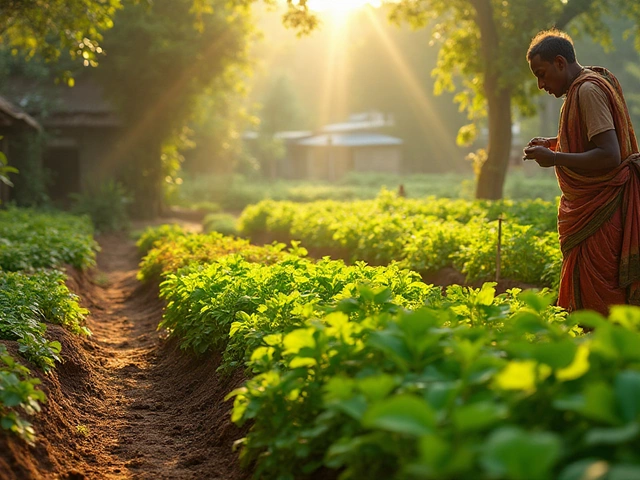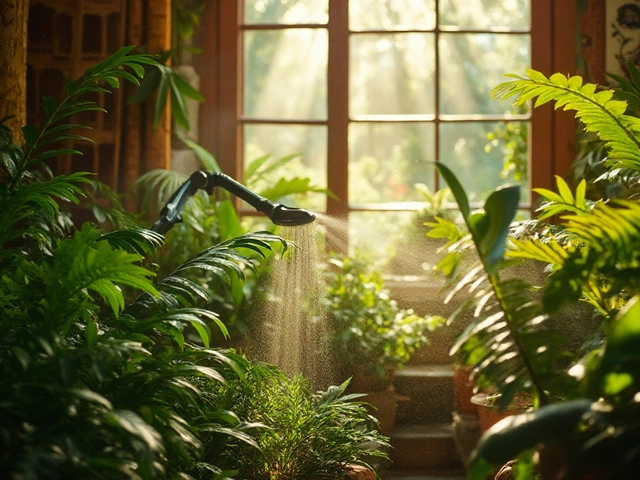Flushing Frequency: How Often Should You Flush Your Garden?
Ever notice yellow leaves, crusty soil, or a weird taste in your vegetables? That’s often a sign of salt or mineral buildup. Flushing—running a big dose of clean water through the soil—helps wash those excess nutrients away and keeps roots happy.
Why Flushing Matters
Most of us add fertilizers, compost teas, or use drip irrigation that recirculates water. Over time, salts from these sources accumulate in the root zone. When salts build up, plants struggle to absorb water, leading to wilting, stunted growth, or even death. Flushing resets the soil chemistry, improves drainage, and gives microbes a chance to thrive.
In indoor setups, flushing also prevents hard water deposits on leaves and in pots. For outdoor beds, especially in arid regions of India, a seasonal flush can protect crops from the stress of summer heat. Think of flushing as a quick spa treatment for your soil.
How to Determine the Right Flushing Schedule
There’s no one‑size‑fits‑all answer, but a few rules of thumb make it easier. Start with the type of plants you grow:
- Leafy greens and herbs: Flush every 2–3 weeks during active growth.
- Fruit‑bearing vegetables (tomatoes, peppers): Flush once a month, or when you see blossom end rot.
- Established trees and shrubs: A deep soak once every 6–8 weeks is enough.
Next, look at your water source. If you use hard tap water, you’ll need to flush more often—about twice the frequency listed above. Soft or rainwater users can stick to the lower end.
Finally, watch the soil. Stick your finger about an inch deep; if it feels crusty or pulls away from the sides of the pot, it’s time to flush. In garden beds, poke a small hole with a stick; if water pools on the surface for more than a minute, give the area a good soak.
How to flush:
- Choose a day when you won’t need the water elsewhere.
- Set your hose or irrigation system to a strong flow.
- Water the area until water runs out of the drainage holes or the lowest point of the bed—usually about 10–15 minutes for a 12‑inch deep root zone.
- Let the soil dry out naturally before the next watering.
Don’t over‑flush. Too much water can leach out the nutrients you’ve already added, forcing you to fertilize again. A good rule is to flush only enough to move the water through the root zone, not to flood the entire garden.
Seasonal tweaks help too. In winter, when growth slows, reduce flushing to once a month or less. In the hot summer months, increase to every 1–2 weeks for fast‑growing crops. Adjust based on weather—if a monsoon washes the soil naturally, you can skip a flush.
Remember, flushing isn’t a cure‑all. Pair it with proper fertilizing, mulching, and good soil structure. Use organic matter like compost to improve water holding capacity and reduce the need for frequent flushing.
Start tracking your flushing schedule in a simple notebook or phone app. Note the date, amount of water, and any plant reactions. Over a few months you’ll see patterns and can fine‑tune the frequency for each zone of your garden.
Bottom line: Flush often enough to keep salts low, but not so much that you wash away valuable nutrients. With a little observation and a regular routine, your plants will stay vigorous, and you’ll avoid the hassle of stubborn nutrient problems.
Flushing Your Drip Irrigation System: How Often Should You Do It?
Keeping your drip irrigation system in top shape means regular flushing. Understanding how often to flush depends on factors like water quality and the type of system you have. This guide walks you through the necessary steps and offers useful tips to ensure your drip irrigation operates efficiently, saving you water and time.
About
Drip Irrigation
Latest Posts


Essential Guide: Indoor Plants That Thrive with Misting
By Alden Thorne Jan 20, 2025

Planting Bleeding Hearts: The Ultimate Guide for Your Kitchen Garden
By Alden Thorne Feb 26, 2025

Bulk Up Garden Soil: Real Ways to Make Your Dirt Work Harder
By Alden Thorne Jun 16, 2025

